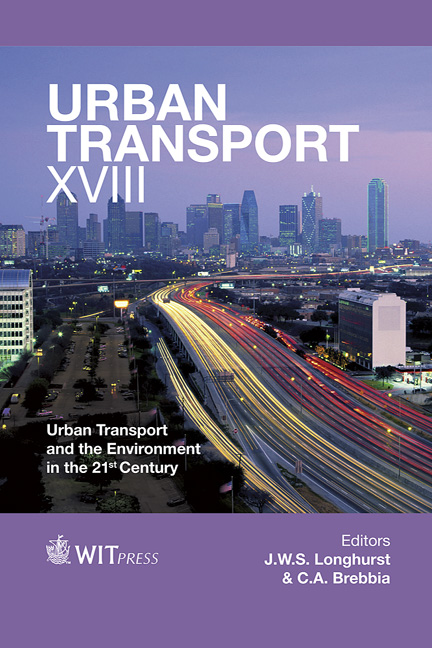Access Optimization In An Urban Area: A Case Study
Price
Free (open access)
Transaction
Volume
128
Pages
12
Page Range
347 - 358
Published
2012
Size
2,028 kb
Paper DOI
10.2495/UT120301
Copyright
WIT Press
Author(s)
N. Filip, M. Moldovan & C. Golgot
Abstract
This paper presents a case study of access optimisation for an airport situated in an urban area. Due to the fact that a national road is located near the airport, the access to and from the airport represents a problem. A research programme was initiated to optimise the access to the airport without disrupting the traffic flow in the national road. Two pieces of SDR equipment were used to evaluate the vehicular traffic characteristics including mean speed. Five days of continuous measurements were undertaken to obtain traffic density, flow rate and speed for different types of vehicles. The proposed solutions were studied to optimise the access, i.e. the effect of a traffic roundabout placed near the airport and the performance of traffic signals with adaptive controls. The two proposals were analysed using the Syncro 7 program. The study concludes that the best solution is the use of traffic signals with adaptive control, which minimises the delay time for the vehicles running on the national road. In this manner, access to the airport is ensured with a minimum delay (of around 20 seconds) for the case of maximum vehicular flow. The traffic roundabout on the other hand provides better access to the airport, but the time delay for vehicles on the national road increases. The study was developed upon request from the city council of Cluj-Napoca, Romania. Keywords: vehicle count, roundabout, adaptive traffic lights, vehicle flow, speed, traffic safety.
Keywords
vehicle count, roundabout, adaptive traffic lights, vehicle flow, speed, traffic safety.





